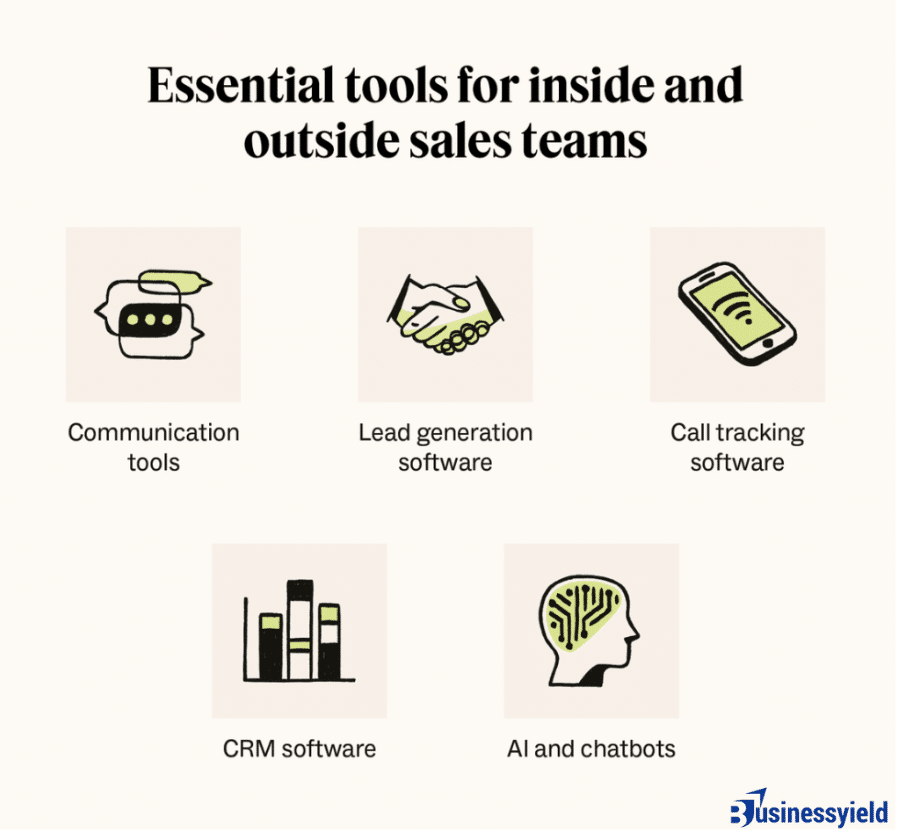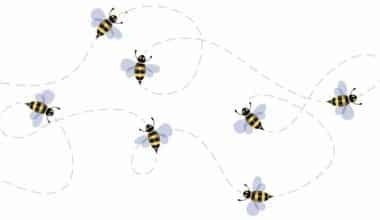If you’re new to the sales world, you may be wondering what the difference is between inside sales vs. outside sales. I know I certainly did, the first time I encountered it. This confusion stems from the fact that while the sales landscape has changed drastically over the years, the basics remain the same. In today’s virtual world, inside and outside sales teams play crucial roles—making it important for your business to incorporate them into your modern sales strategy.
While it’s often argued that these two strategies are at odds with one another, they are blending in today’s market, and both have become a vital part of sales organizations. Evolving technology means customers are no longer limited to shopping locally, which means buyers are just a few clicks away from purchasing a product from a small business on the other side of the globe.
So, in this guide, I will define and compare inside vs. outside sales so your sales teams are equipped with the tools to build a loyal customer base for your brand.
Key points
Inside sales refers to salespeople who sell products or services to customers remotely, such as over the phone and the Internet.
Outside sales refers to selling products or services in person, which requires travelling to meet with customers or teams face-to-face.
Both inside and outside sales requires negotiating and closing deals, working under pressure, and meeting deadlines, as well as strong communication skills.
Companies can adopt both inside and outside sales for greater efficiency, where they assist each other in tasks such as lead generation, to increase sales.
Inside vs. outside sales: What is inside sales?
Inside sales is the selling of products or services over the phone, email, chat, or another remote channel. An inside sales representative approaches warm leads—customers who have expressed interest in the company or product by clicking on an advertisement, asking a question in a chat, or signing up for newsletters and promotions, among other actions.

Inside sales is different from telemarketing, where salespeople cold-call potential customers from a register and read from a script. Though cold-calling might still be involved, inside sales typically require creative and strategic approaches to selling to business-to-business (B2B) and business-to-consumer (B2C) clients.
You can read more on cold-calling via the links below:
- WHAT IS COLD CALLING: Definition, How It Works, Examples and Techniques
- COLD CALLING: Cold Calling Strategies
- Top 5 Cold Calling Tips For Successful Sales
If you choose to utilize inside sales, your agents will work in a centralized location, like an office, and will not travel to meet with prospective buyers face-to-face. Rather, they will spend their days sales prospecting and generating leads, connecting with those who have expressed interest in the business’s products or services. Inside sales reps engage with prospects in two ways:
- Inbound sales: Leads make first contact with your business with questions or interest in your products or services.
- Outbound sales: Inside sales reps reach out to prospects to gauge interest in products and services.
Agents can communicate via live methods like sales calls or live chat, or asynchronously through online forms, messaging, or SMS.
Inside sales duties and responsibilities
There are two primary approaches to client acquisition and management for inside sales specialists: targeted and cold-calling.
In targeted sales, an inside sales associate maintains contact with existing clients. They act as the company’s point of contact and typically help with client orders, troubleshooting, and other client needs. They also create and maintain long-lasting relationships with the company’s clients, which, in turn, promotes steady income.
In cases of cold-calling, however, an inside sales associate creates new contacts with businesses and individuals. This can be a more challenging situation for the salesperson, as they will often speak with contacts who aren’t planning on making a purchase.
Whether you choose to use the targeted or cold-calling approach, your inside sales professionals need to have the following capabilities:
- Communication: The ability to convey what you are trying to say is vital to inside sales professionals looking to initiate or maximize a sales relationship with a client. In most roles, you are communicating through a phone call, text, or email and you need to be able to make that communication count.
- Computer literacy: Most inside sales reps will need to know how to use a computer to track their work, record contacts, and process orders and payments, among other basic sales functions.
- Persistence: For targeted accounts, it can often take multiple sales calls and regular check-ins to earn and maintain business with a company. For cold-calling, it’s necessary to be able to push through potentially long runs of nonsales to find an interested customer.
- Intuition: The ability to read others is crucial. Both targeted and cold-calling staff should be able to understand their clients’ responses (i.e., what they say and how they say it) to respond in a way that increases the likelihood of a sale.
Inside vs. outside sales: What is outside sales?
Outside sales is the process of conducting sales outside of the company’s primary location, typically through face-to-face interactions. These representatives work in a broad range of potential settings, from visiting clients directly to meeting in other designated public and private spaces. Sales can also happen from your remote office.

As outside sales require selling in various locations, your sales development representatives must be agile and flexible. You’ll need to adapt your sales pitch to each situation since environments could range from trade shows and conventions to field sales meetings and even door-to-door. Building personal relationships can be more effective for answering questions and closing sales.
Outside sales reps spend most of their time traveling to meet with clients, connect with prospects, and nurture relationships. The 2021 Xant.ai report found that outside teams engage in 25% more calls and over 50% more email activities. They often sell at industry events, conferences, or speaking engagements. This type of sales position is a good fit for those who like to manage their schedules and work independently.
Outside sales duties and responsibilities
An outside sales representative’s responsibilities vary depending on the setting in which they work, as well as whether they have a targeted or cold lead function. Suppose you are a sales associate working in direct or targeted sales. In that case, you will probably be assigned a small area within the company’s region and be responsible for building relationships with businesses within that area. This entails making both visits and phone calls to existing clients to maintain strong relationships, renew orders when needed, and schedule appointments with potential clients.
When meeting with a prospective client, you will pitch the client on the company’s products or services to close a deal. Some outside sales reps work primarily with cold leads, either in a permanent position inside a store or in a booth set up at a festival or expo. If you’re working in this setting, you will be responsible for engaging new clients and gaining contact information for follow-up.
In both targeted and cold lead positions, you will need to have the following capabilities as an outside sales professional:
- Interpersonal skills: The ability to use your friendly personality and personal charisma to win over clients, new and existing, is crucial to maintaining a solid sales record.
- Communication: It’s vitally important that you can make pitches in a way that people understand and follow with ease.
- Organization: Outside sales professionals have more to organize and more paperwork overall than inside sales. You need solid organizational skills to keep track of all order sheets and product promotions, along with contact information and scheduling.
- Math: One benefit of in-person sales is the ability to use scratch math to make points. It can be quite convincing to do some quick math to show high savings.
SEE: How to Drive Sales With Digital Marketing
Inside sales vs. outside sales: What are the differences?

The primary difference between inside and outside sales is the location and its effect on the sales process. Outside sales representatives may be placed in situations for which there is no similar comparison in inside sales, such as working in a sales booth at a town festival.
One major benefit that an outside sales representative has is the face-to-face contact they have with their clients. Direct contact makes it easier to build a strong relationship with customers, resulting in more loyal connections with long-term clients.
Other key differences between inside sales and outside sales include:
- Inside sales representatives interact with clients almost exclusively remotely, as opposed to outside sales representatives, who can work exclusively face-to-face or use a combination of both.
- Inside sales representatives are capable of contacting a greater number of leads in the same period, but they may sometimes experience lower closing rates.
- Outside sales representatives have higher operating costs for their transport and lodging when required, but they often garner higher salaries as well.
- Sales orders placed by inside sales representatives will usually be smaller than those of outside sales representatives, as they are more likely to be from first-time customers.
- Outside sales representatives have to complete more preparatory work, such as organizing slides for a meeting or preparing a booth for a demonstration at a show.
- Inside sales representatives should be capable of closing sales without the assistance of visual aids.
Inside sales vs. outside sales team structure
In the area of team structures, the main difference between inside and outside sales is sales territories. These are based on the geographic location of customers relative to the field rep but can also include individual business circumstances. For example, if your company is in danger of losing business or sees an opportunity to earn more through in-person visits, that customer can be assigned to an outside sales team.
Sales teams can vary in size depending on your business’s industry, product, and size. Otherwise, the outside and inside sales team structures are the same.

Each member has a specific superpower that contributes to the team’s success. The common structure looks like this:
- Sales directors are responsible for sales operations, strategies, and revenue growth across the business.
- Sales managers oversee day-to-day operations for their sales teams, ensuring reps are on track to meet their sales goals. Managers train and mentor team members and monitor the metrics behind their performance.
- Sales engineers are product experts who answer technical questions and handle complex product issues.
- Sales reps (inside and outside sales) interact with prospects throughout the sales process. They nurture relationships to turn leads into customers.
- Customer service representatives comprise the support team that handles customer requests, issues, or inquiries after the sale.
Skills needed in inside vs. outside sales
If you choose to work in inside sales, you’ll need to be very good at building relationships over the phone or via email, as you’ll normally be dealing with customers remotely.
In inside sales, you’ll need to:
- Understand customer needs and pain points.
- Match customer needs with what your company offers.
- Be resilient, creative, and resourceful in employing sales strategies.
- Have active listening and information-gathering skills.
Outside salespeople often work on high-value deals, where building relationships and establishing trust are important.
In outside sales, you’ll need to:
- Establish the product’s credibility.
- Have excellent interpersonal skills.
- Be willing and able to travel.
- Be organized and have strong time management skills.
- Be familiar with technology to manage your sales pipeline or territory, set up presentations, and complete product demonstrations.
Sales models of inside vs. outside sales teams
Deciding which sales model to adopt for your business isn’t as straightforward as it used to be. Traditionally, B2B sales teams based their decision on the type of product or service they sold. Selling physical products to large companies required an outside sales force while selling to small businesses and closing deals on low-cost services took an inside sales team.
As technology evolves, businesses worldwide are finding new and innovative ways to demonstrate products and close complex deals through multiple channels. This includes virtual meetings and demos via Zoom and self-service sales models with inside salespeople on standby via live chat.
Here’s an example of how inside sales and outside sales models are typically structured within the standard five-step sales process:
| Inside sales | Outside sales | |
|---|---|---|
| Prospecting | Lead follow-up from marketing efforts (free trials, webinars, virtual summits) Social selling (outreach to social media connections) Cold emails and cold calling via phone | In-person cold-calling (going door to door) Live events (trade shows, networking events) |
| Qualifying | Automated lead scoring Questionnaires Virtual meetings | In-person consultative selling (meeting over coffee to discuss customer needs) |
| Presenting | Virtual, interactive demos (slide decks, software demos) | In-person visual presentations, such as slide decksInteractive demos Brochures, handouts, business cards, and other paper collateral Physical product demonstrations |
| Closing | Electronic contract signing | In-person meetings with decision-makers |
| Following up | Virtual training Setting up a referral program Sending gifts/handwritten notes via mail | On-site training Entertaining clients (delivering catered lunches, taking clients to sporting events) |
Below are ten sales pitch templates that you and your sales team can use for your marketing and lead-generating efforts. These examples cover various types of sales pitches and offer tips you can apply to any prospect:
BusinessYield Sales Pitch Templates
READ ALSO: Sales Pitch: How To Write Sales Pitch (+Detailed Examples)
Inside vs. outside sales: Common business impacts
One thing you should take note of is that inside sales processes are inherently more time- and cost-efficient than outside sales. As a result, it’s important to remember how implementing inside sales vs. outside sales strategies could impact your business.
Here are a few things to consider:
- Cost: Inside salespeople typically require one-time purchases and small fixed costs to do their job—like a computer, internet access, and a phone. As at-home and hybrid work models become the norm, companies with remote inside sales teams save on paying for office space. Outside sales, in contrast, incur costs like travel, lodging, and meal stipends.
- Efficiency: Without the need to travel and with ready access to internal tools and processes, an inside sales approach can lead to a greater number of sales opportunities and a shorter sales cycle.
Selling to enterprise companies involves interactions with multiple decision-makers. Depending on where customers are in the buying stage, sending an outside sales rep to meet with the entire buying group can be more efficient and impactful. - Scalability: This has a dual meaning concerning sales. Remote inside sales teams can reach customers regardless of their time zone or geographical limitations, so your business can hire from a deeper talent pool. It also means inside sales teams can connect via video conferencing apps instead of spending a boatload of dough on unnecessary trips.
- Buyer preferences: A recent McKinsey & Company survey shows that “customers still want an evenly divided mix of traditional, remote, and self-service channels, such as face-to-face sellers, inside sales, and e-commerce.” The survey also found that two-thirds of customers chose remote sales interactions or self-service when placing an order.
The LinkedIn State of Sales Report 2022 shows that virtual sales are effective, with 40% of sales professionals saying they have “closed deals over $500,000 without ever meeting the buyer face-to-face.” However, many enterprise companies prefer to work with outside sales reps. On-site visits put the decision-makers in the same room, allowing for more focused meetings with fewer distractions and better collaboration. - Relationship building: Digital interactions between sales reps and customers may not feel as personal as face-to-face conversations. Meeting in person humanizes the salesperson to the customer, and vice versa, making it easier to build a relationship.
If your company sells physical products, field reps can demo products and invite potential customers to interact with the items. Customers can try out product features and understand how they can benefit their business in real-time. Outside reps can also provide on-site training or consultative services that can’t be performed through virtual channels.
Tools used in the inside vs. outside sales process
Here are a few of the top tools I recommend in the inside vs outside sales process to help you reach your sales goals.
Lead generation software
Lead generation software features sales engagement tools that help your team discover and organize leads and make communication easier. Prospecting tools can help you compile lists of leads, while enrichment tools allow you to create comprehensive customer profiles.
CRM software
The right CRM software creates a great experience for your sales team and the prospect. It provides your team with full visibility of the sales pipeline so you can follow leads through the customer journey. Contact and deal management and activity tracking help boost productivity, while triggers and task automation help streamline workflows.
Call tracking software
Talking to prospects on the phone will always be a leading communication channel. Call tracking software allows you to sync your voice software with other channels to connect with prospects more easily. It logs the conversations in a unified agent workspace, giving you the context you need when following up with your leads.
Communication tools
Your inside and outside sales teams need digital communication tools to meet the customers where they are. Video conferencing integrations like Zoom allow you to meet with customers in a virtual meeting room so you can put a face to a name and form a connection.
Collaboration tools, such as Slack, help you connect live or asynchronously with prospects and your sales team. Additionally, business messaging apps, like WhatsApp Business or Messenger, put the conversation in the palm of your hand.
AI and chatbots
AI chatbots can offer a convenient self-service experience for customers looking to buy products without involving an agent, or seamlessly connect a customer to a salesperson for help. Advanced bots can understand intent and sentiment, route customers to a sales rep to answer questions, and show conversation history for additional context.
Inside vs outside sales statistics and recommendations
In 2017, a Xant.ai study found that field sales reps dominated large organizations (revenue > $500M). Small organizations with revenues below $50 million, on the other hand, had the highest percentage of inside sales reps at 47%.
Also, HubSpot’s 2021 Sales Enablement Survey, which surveyed over 500 sales leaders, shows how much things have changed in just five years. 68% of sales leaders say they’ll adopt either a hybrid or fully remote selling model in 2021. In fact, most leaders (63%) believe that virtual meetings can be as effective, if not more, than in-person meetings. In addition, 64% of sales leaders who transitioned to remote work sales in 2020 met or exceeded their sales goals.
With this in mind, I recommend that sales teams combine both inside and outside sales reps, as each structure can prove beneficial depending on the company’s goals and priorities.






